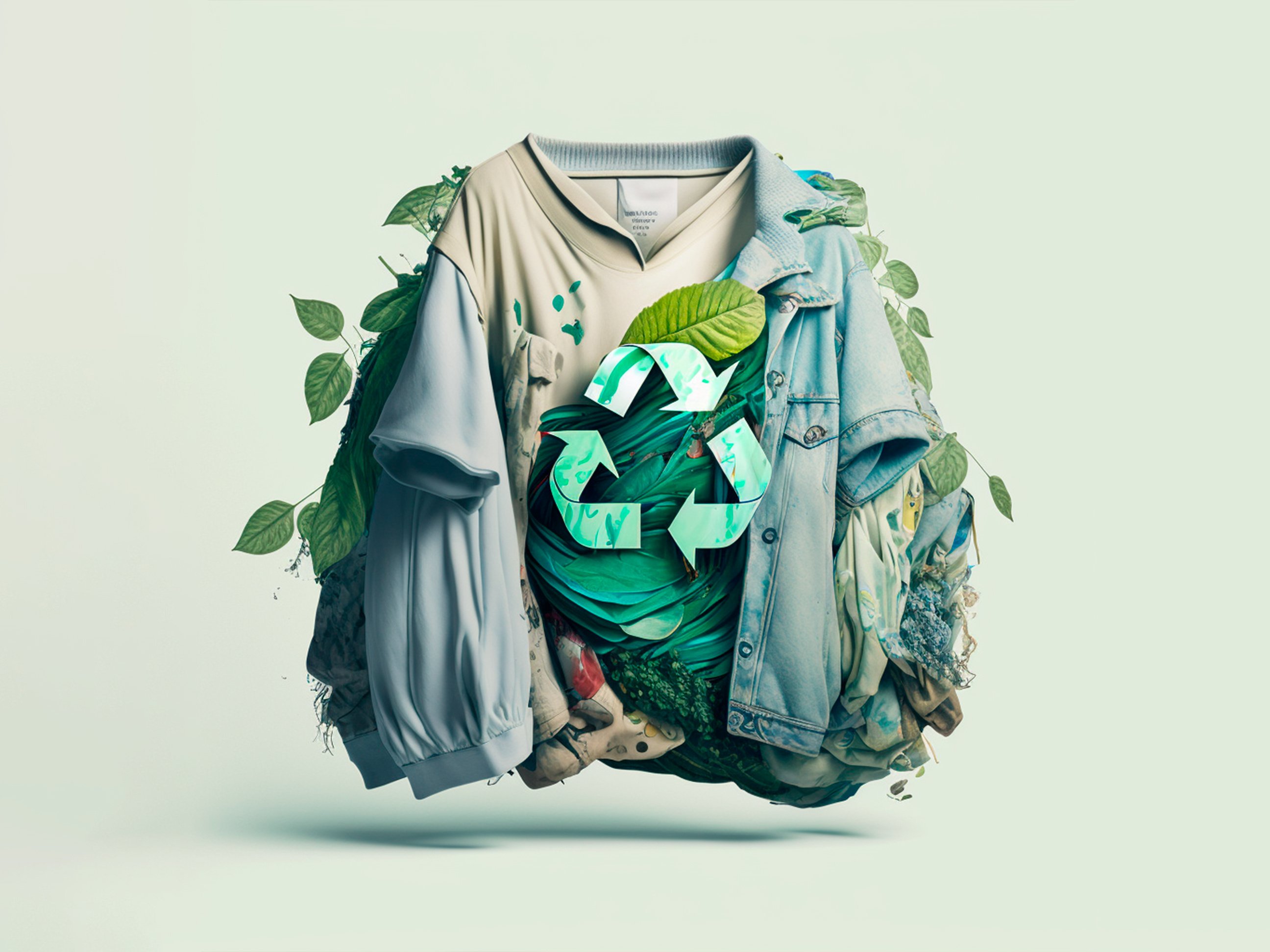Stay Ahead of the Curve by Exploring Ingenious Style Trends
In an industry as dynamic as style, staying in advance involves greater than simply following present fads-- it requires an expedition of development. Smart textiles, for example, are changing garments into practical masterpieces, while 3D printing is reinventing style processes with its customizable, waste-reducing capabilities. As sustainability becomes a foundation, innovations like green products and round style methods are reshaping environmental obligation - Cape Town Sustainable Fashion. Additionally, the merging of technology and fashion declares a brand-new period of customer interaction. Exactly how, then, can these arising trends redefine the future of fashion, and what implications do they hold for brand names seeking to flourish in this progressing landscape?

Accepting Smart Textiles
In recent times, the apparel industry has experienced a transformative change with the integration of clever fabrics, an advanced advancement that blends innovation with material. This advancement represents not just a fusion of looks and capability yet additionally a significant jump in the direction of sustainability and customization in fashion. Smart fabrics, likewise called e-textiles, installed advanced electronic devices such as sensors and conductive threads within the fabric, making it possible for garments to connect with the wearer or the setting.
These textiles are developed to monitor physiological parameters, such as heart price or body temperature, providing real-time health analytics. Past health applications, wise fabrics are likewise being used for adaptive clothes, which can change shade or pattern in reaction to environmental stimuli, thus offering a dynamic style experience.
In addition, the advancement of energy-harvesting textiles that generate power from motion or sunlight is leading the way for self-sufficient wearable modern technology. This advancement is attracting environmentally conscious consumers and developers intending to reduce the environmental footprint of style. As research study and growth in this field advance, clever textiles are anticipated to become increasingly prevalent, improving the landscape of contemporary style with their multifunctional capabilities.
The Surge of 3D Printing
Reinventing the manufacturing landscape, 3D printing has arised as a game-changer in the apparel industry. This innovative innovation has actually allowed designers to press the limits of imagination, generating elaborate and tailored garments that were previously unthinkable. By leveraging digital style and additive production, 3D printing facilitates the development of intricate geometries and patterns, enabling designers to trying out new structures and structures.
A remarkable advantage of 3D printing in vogue is its ability to create on-demand, decreasing waste and decreasing stock demands. This efficiency not only maximizes manufacturing procedures but additionally enables fast prototyping, enabling developers to bring their visions to life in a shorter timeframe. In addition, 3D printing sustains modification somewhat unrivaled by traditional methods, using distinct styles and tailored fits tailored to private consumer choices.
The rise of 3D printing has likewise democratized style, making it accessible to emerging designers that can currently produce high-grade pieces without substantial economic investment in traditional production framework. As technology remains to development, the style industry is poised to harness the full potential of 3D printing, checking out new products and methods that will definitely redefine exactly how fashion is developed and generated.
Lasting Fashion Developments
As the garment industry comes to grips with journalism demand for ecological responsibility, lasting fashion developments have arised at the leading edge of transformative adjustment. The growing recognition this website of environmental impact has fueled a change towards even more eco-conscious practices and products. Brand names and designers are currently prioritizing sustainability, incorporating approaches that lessen waste and minimize carbon impacts.
One considerable advancement is the increase of round style, which emphasizes recycling and upcycling to extend the lifecycle of garments. This technique not just reduces waste but likewise motivates consumers to adopt a much more conscious technique to garments consumption.
One more development depends on the adoption of ingenious dyeing methods that utilize waterless processes or all-natural dyes, consequently reducing the vast amounts of water and chemicals generally made use of in fabric dyeing. Additionally, improvements in biotechnology have actually caused the production of lab-grown leather and materials, using cruelty-free and eco friendly choices to standard materials. Through these introducing initiatives, the garment industry is making purposeful strides in the direction of a more lasting future.

Tech-Integrated Garments
Tech-integrated apparel represents a revolutionary combination of style and technology, reshaping exactly how people connect with their clothes. This innovative domain name is noted by the inclusion of clever fabrics and ingrained electronic parts, improving both capability and visual appeal. From physical fitness trackers embedded in sportswear to heated jackets controlled through mobile phone apps, tech-integrated clothing uses customers extraordinary comfort and versatility.
Introducing brand names are driving this trend, concentrating on developing garments that reply to environmental stimuli or customer commands. As an example, some garments can transform color or pattern in action to temperature changes, visit site while others include biometric sensing units to keep track of wellness metrics like heart price or stress levels. The seamless assimilation of modern technology right into fabrics also reaches ecological sustainability, with initiatives to create self-cleaning fabrics or garments that readjust to weather, hence reducing the demand for numerous layers.
Furthermore, the development of wearable modern technology is not simply restricted to apparel but encompasses devices like watches and glasses, more broadening the scope of tech-integrated style. As the market remains to innovate, the possibility for customization and personalization in apparel grows, supplying customers one-of-a-kind, tech-enhanced fashion experiences that deal with their specific demands and choices.
Future of Virtual Fashion
In the last few years, the future of digital style has arised as a transformative pressure within the sector, leveraging developments in electronic modern technology to redefine just how fashion is created, experienced, and eaten. By incorporating enhanced truth (AR), virtual fact (VIRTUAL REALITY), and 3D design devices, designers can now craft immersive and interactive experiences that transcend traditional style limits. Virtual style enables for the development of garments that exist only in digital environments, supplying limitless possibilities for advancement without the restrictions of physical production.
This electronic shift not only presents possibilities for innovative expression but also addresses sustainability problems intrinsic in conventional style techniques. Cape Town Sustainable Fashion. By getting rid of the need for physical sources, virtual fashion lowers waste and reduces carbon impacts. Moreover, the increase click here now of digital fashion straightens with the increasing consumer need for personalized and distinct experiences, as digital garments can be customized and tailored to individual preferences effortlessly

Verdict
The garment industry's future lies in the assimilation of innovative innovations and sustainable methods - Cape Town Sustainable Fashion. Smart textiles and tech-integrated apparel are boosting functionality, while 3D printing supplies chances for personalization and waste reduction. Lasting fashion, via environment-friendly materials and circular strategies, shows a dedication to environmental stewardship. Moreover, virtual fashion is positioned to redefine consumer communications. Adjusting to these trends is vital for brands looking for to continue to be competitive and appropriate in this rapidly evolving landscape.
In recent years, the fashion sector has actually observed a transformative shift with the integration of smart fabrics, an innovative technology that mixes technology with fabric.As the style industry grapples with the pressing need for environmental responsibility, lasting fashion developments have emerged at the leading edge of transformative adjustment.In current years, the future of digital style has actually emerged as a transformative pressure within the industry, leveraging developments in digital technology to redefine how fashion is produced, experienced, and taken in. The increase of digital fashion aligns with the enhancing consumer need for individualized and special experiences, as online garments can be personalized and customized to individual choices with convenience.
The style market's future lies in the assimilation of innovative technologies and lasting methods.